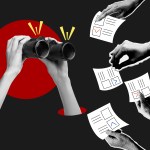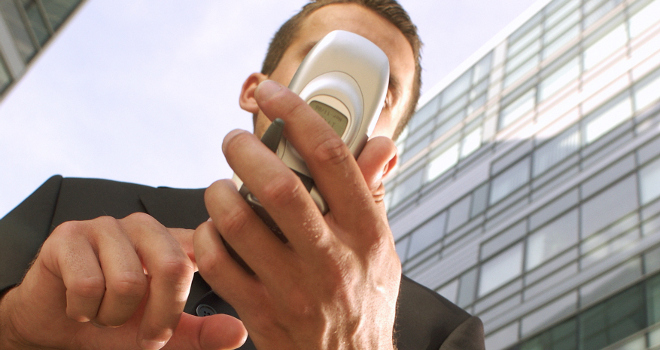The 5.8 earthquake that struck the Eastern seaboard around 2 p.m. today did more than rattle nerves and inspire a torrent of topical puns on Twitter, it also lead to dead cellular phone service for untold millions of customers trying to make calls on the nation’s four largest wireless carriers (in order: Verizon, AT&T, Sprint, T-Mobile).
Wireless phone companies reported that their networks were undamaged,but that the sudden spike in call volume was overwhelming their networks.
“The industry’s infrastructure appears to be intact, but because many wireless consumers are using the networks, we are experiencing higher than normal traffic,” industry association CTIA said. “In these high volume instances, there can be delays. We encourage people to send text messages and e-mails to contact their loved ones until volume returns to normal.”
When asked why their networks couldn’t cope in a crisis, several spokesmen for the nation’s largest wireless carriers issued a collective shrug.
“The laws of physics are at work here. People naturally, when they see a situation like this will get on the phone and make heavy volumes of calls, and there can be congestion, and that’s what we’re experiencing here,” said Mark Siegel, AT&T’s executive director of media relations.
When asked whether the company had upgraded its network to cope in crisis situations, Siegel declined to answer.
“That’s a very large question, and we can discuss it another day, but right now this is what people are interested in: There are no reports of network damage, and we’ve received very heavy call volumes,” he said.
When asked why the phone lines weren’t working Tuesday afternoon, Richard Young, a Verizon spokesman simply responded: “We’re in the middle of an earthquake right now, so it’s not surprising.”
Meanwhile, Sprint spokeswoman Crystal Davis emailed us shortly after the earthquake to say that “Calls are still going through, just not at calls at once. Customers might have to try one or two times before their calls can go through because a larger than normal amount of people are calling from the same area at the same time.”
In a general primer sent out to reporters on the subject on Tuesday, CTIA noted that population density has an impact on wireless phone service.
“The number of users in a given area matters,” the association explained in a statement. “The more people wanting to use their wireless devices, the more capacity is needed to provide service. That’s why more antennas are necessary in densely populated areas than in less populated rural settings.”
But for New York at least, it seems that nobody actually has a clue as to how many antennas there are serving the city.
Last December, New York City Councilman Peter F. Vallone said that the city doesn’t have any records of where all the antennas in the city are.
“Nobody has any idea of what’s going on,” Mr. Vallone said at a hearing last December. “It’s like the Wild West out there.”
While in this case, the disruption was mostly just an inconvenience to those trying to chatter about the event, in a more serious disaster, it’s easy to see how not being able to make calls could be an enormous problem.
After September 11, the carriers reported that there was “a ten-fold increase in call volumes during peak hours just after the attacks, [which] led to a 92 percent block rate on New York City’s cellular phone networks,” according to a report from NYU’s Center for Catastrophe Preparedness & Response.
The attacks galvanized the Federal Communications Commission’s attempt, already underway at the time, to set up a reliable national emergency wireless system, the aptly-named Wireless Priority Service.
Ten years and over $208 million later, it’s operational around the country, so why didn’t it work for us today?
WPS is only authorized for law enforcement personnel and emergency respondents, who must enroll in the program, which costs a maximum of $10 to set up and $4.50 per month. Then, a piece of software installed by the carrier automatically prioritizes the enrollee’s calls above all others (yours and mine). Enrollees have to dial a special combination, star 272, before the dialing the number they wish to call. Then, their call is picked apart from the numerous other ones trying to go through the nearest cell tower, and allowed to go through. You can read all the fine details of the program here.
But in the meantime, for us regular callers, the congestion problem is only going to get worse, especially because cell phone and smartphone growth are far outpacing cell tower infrastructure and spectrum allotments.









